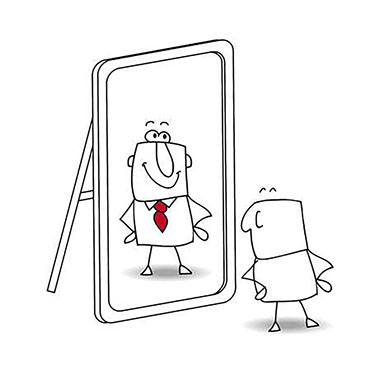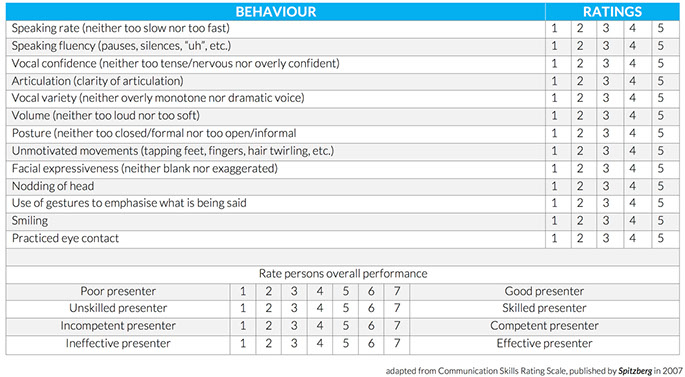Free self development lessons for Humanity
Improving Public Presentations Using Nonverbal Communication and Audience Feedback
Otermans Institute
at Hillwood Academy, Uttarakhand, India
If you thought our content was useful and helped you upscale today, you can leave a donation at the below. All funds collected will be donated to the Prime Minister's National Relief Fund to support Covid-19 victims.
DONATE NOW
Improving Public Presentations Using Nonverbal Communication and Audience Feedback
• What is self-awareness and why is it important?
• Influencing your audience engagement using eye contact and mirroring
• Creating mental images using hand gestures
• Smiling influences how you are seen by your audience
• Changing your performance to suit your audience
• Tips & Exercises for the 'lockdown'
This lesson includes several key fundamentals necessary for creating an engaging presentation. Before you start this lesson, think about a talk that you found very inspiring and engaging. Now keep that talk in your mind as you read through this lesson. There were a few things that the presenter had likely done to make their talk so engaging. The idea of this lesson is to help you replicate that behaviour in your next presentation. So let's begin.
What is self-awareness and why is it important?
Self-awareness is a skill that develops over time. It is a skill that all great public speakers and leaders have. This skill is utilised to gage and maintain the attention of the public or their employees. Self-awareness is the ability to objectively evaluate yourself, manage your emotions and correctly understand how others perceive you. When giving a presentation, this is a great skill to have.
There are several ways of improving self-awareness:
1. Keep a video log of all your presentations or practiced presentations to regularly go through them.
2. Reflect on the areas which you think you need improvement and also use the log to monitor your progress.
3. Ask for feedback on your presentations; and accept both positive and negative feedback as both are extremely valuable for continuous improvement.
Audience engagement using eye contact and mirroring
Your use of eye contact can go a long way. Looking directly at individuals in the audience will give them a sense that you are talking directly to them and, as a result, are likely to be make them more engaged. This happens for a three major reasons:
1. They feel as though you are talking directly to them which makes them feel like it is important to listen to you.
2. This replicates a one-on-one discussion.
3. You seem very confident and knowledgeable about your topic.
Some trainers suggest that you find one person in the audience who is nodding their head and to focus on them as this will help you evaluate your performance in real-time. This is a good idea if you are just starting out; but remember that doing this comes with the risk of other member of the audience perceiving you as being nervous. It is advisable to look at a few individuals in the audience, across the spectrum of the room, throughout your presentation. You can get more useful tips on eye contact and holding a conversation in the lesson on introducing yourself.
Mirroring naturally occurs when a person unconsciously imitates the nodding or attitude of another. It is a sign of engagement and caring in social interactions. You can use this tool to assess whether the audience is listening to what you are saying. When you are speaking about a topic, you can look at individual listeners and nod as you state a fact, and monitor how many people mirror your nod in the room. This is effective in getting a sense of how engaged your audience is.
Creating mental images using hand gestures
It is well known that using hand gestures are important for effective communication if used correctly. By correctly I mean that they match whatever you’re saying. This not only helps clarify communication, but research has shown that if you practiced your presentation using gestures, it will help you speak more clearly when delivering the actual talk. Interestingly, the use of open palm gestures, as suggested in the related lesson on body language, builds the audience’s trust in the beginning of a presentation.
There is something else that hand gesture use helps with; creating mental images. This helps your audience think and visualise. For example, a speaker who is giving directions may say, “take a right after the traffic light” while moving their hand to the right. This not only helps the speaker relay what he is trying to say, but it also helps the listener envisage what the speaker is trying to say. This idea extends to presentations. Try to use your hands to create a mental image for your audience.
You should also, immediately after this lesson, check the body language tips developed by Otermans Institute for more tips on using hand gestures effectively.
Smiling influences how you are seen by your audience
Smiling is a cultural phenomenon. In many cultures it is customary not to smile during presentations and in others it is customary to smile as it is seen as being friendly. However, while you are expected to know who your audience are, you are not expected to know everyone's cultural backgrounds. A good rule of thumb is to smile when introducing yourself in a presentation as this informs your audience that you are confident. It also makes you more approachable and ignites interactions from your audience. However, it is not advisable to smile throughout your presentation as research has found that the audience perceives this as incompetence. If you would like to know more about creating first impressions, then you should read through a related lesson in the series titled Introducing yourself: Making the first minutes count.
There may be instances where you feel it is necessary to smile during a presentation. This can make your talk a bit more enjoyable, but the timing must be right. For example, if you are explaining a phenomenon about animals that are generally seen as cute and cuddly, then it is okay to smile. It is perhaps similar when you are talking about babies or when you are talking about how humans care for each other. The takeaway from this is that smiling is okay during a presentation when it is suitable. Don’t bank on smiling while talking about things like deaths in a war!
Changing your performance to suit your audience
Knowing your audience is the best way to give a presentation. It is one thing to give a talk about ‘The Theory of Numbers’ to enthused mathematicians, but it is another to give the same talk to a bunch of artists. The idea is to read the body language of your audience; are they yawning, are they distracted by their mobile phones, are they slouching or are they leaning in towards you or nodding. Remember again that it always helps to do some research on your audience and the vent you are speaking at before hand to construct the right presentation style.
There are a few ways of altering your performance on the spot to make it more interesting:
1. Speak at a slower pace so that people can digest your words effectively. This also helps non-specialised audiences better understand your points.
2. Pauses and silences are good for this too as it gives your audience time to digest your points and also to mentally visualise them.
3. Make sure you use a wide vocal variety, but not too much though.
4. Stop twirling your hair or your laser pointer. You’re supposed to be using hand gestures and use this to engage your audience.
5. Facial expressions go a long way so try and show emotions when you speak. Smiling during a serious part of the presentation does not normally help. You can find more tips on this in the lesson on communication.
Tips & Exercises for the 'lock down'
You can use these exercises as a means of practicing for your next presentation. As the old saying goes ‘practice makes perfect’, there is a major component of skill development to it. Essentially, practicing in a range of contexts will benefit you if you wish to gain superior public speakings.
Self:
1. Practice a 15-minute presentation while looking in the mirror. Then self-reflect based on the information that I have given you in this lesson and make notes. Highlight at least one area which you will actively work to improve on and one thing in your presentation that you think was great.

2. Using a camera, record your presentation and watch this back. Get two family members or friends to rate your performance using the rating questionnaire below where 1 is the lowest and 5 the is highest score. You can increase the audience if you wish.

3. Practice this same presentation using an on-line platform called ROC Speak . This on-line system will give you the final objective feedback that you need for improvement. This system will also allow you to provide feedback to other presenters who you know too.
Family: Encourage every member of the family to make and record their own videos. Maybe you can even help them with the video shoot. Then share each video on your family WhatsApp group chat, if you don't have one yet create it. Let all members of the group not only rate each video presentation using the same system as above, but also mention one area of improvement and one area that was great for each presenter.
We look forward to hearing from you what your purpose is, and your plans on how to live a life with this purpose! You can connect with us using the form below.
Got queries regarding this article, or want to learn more?
Write to us, and our trainers will get back to you.
Powered by Smatter | Design support by NUTS India